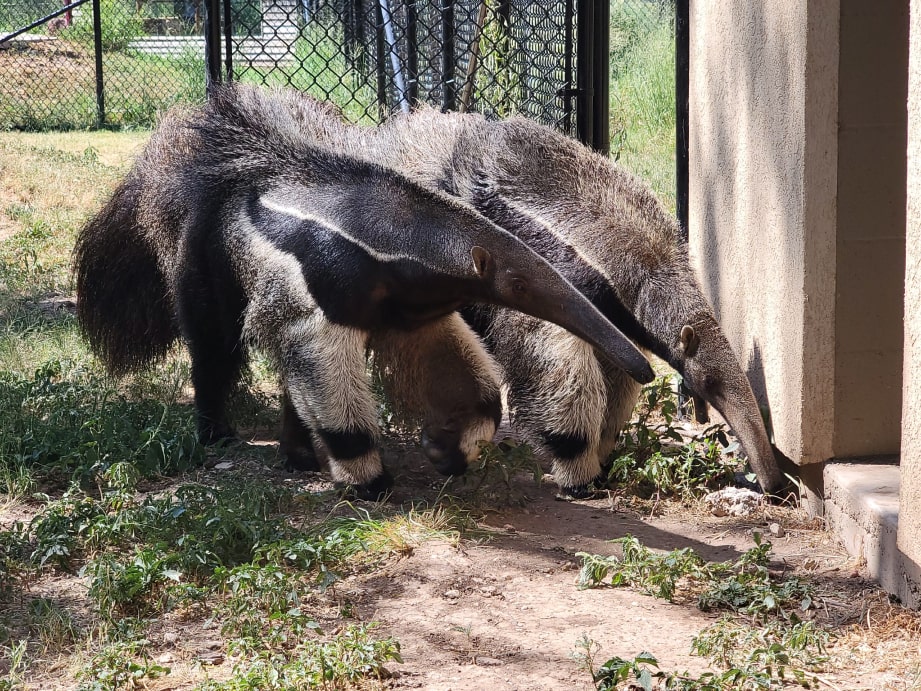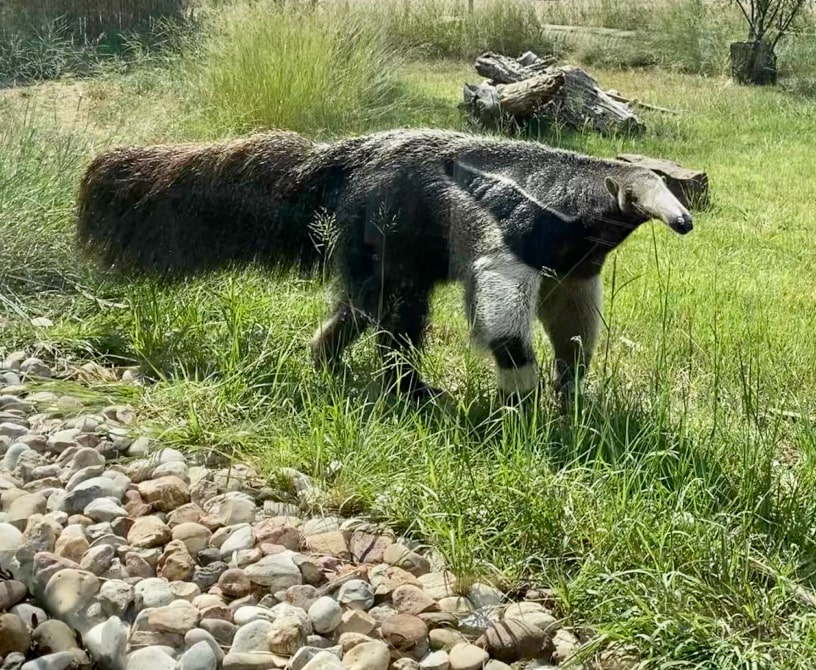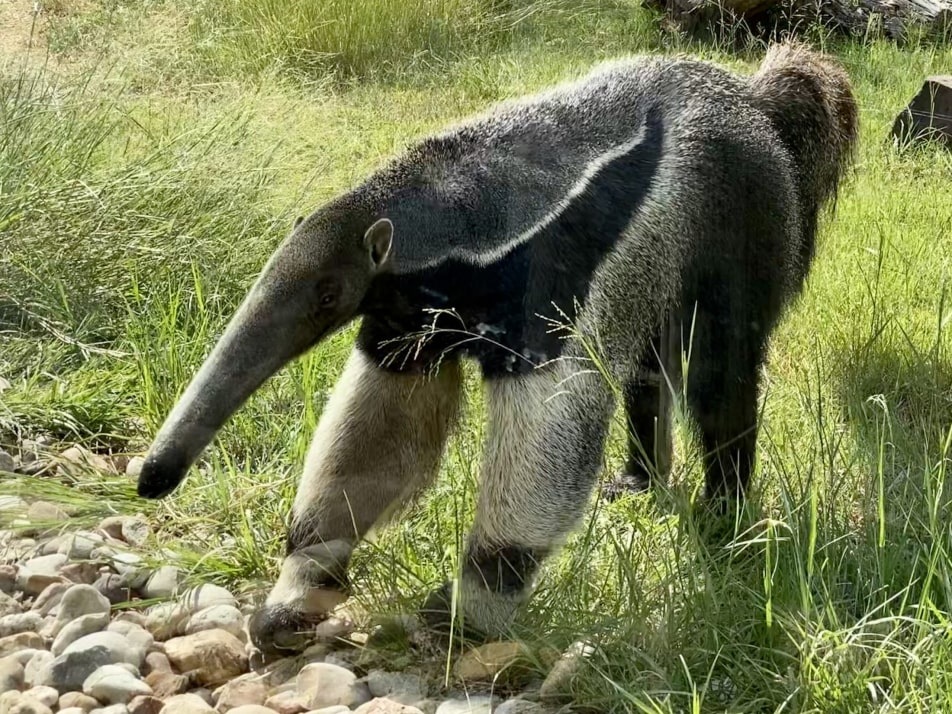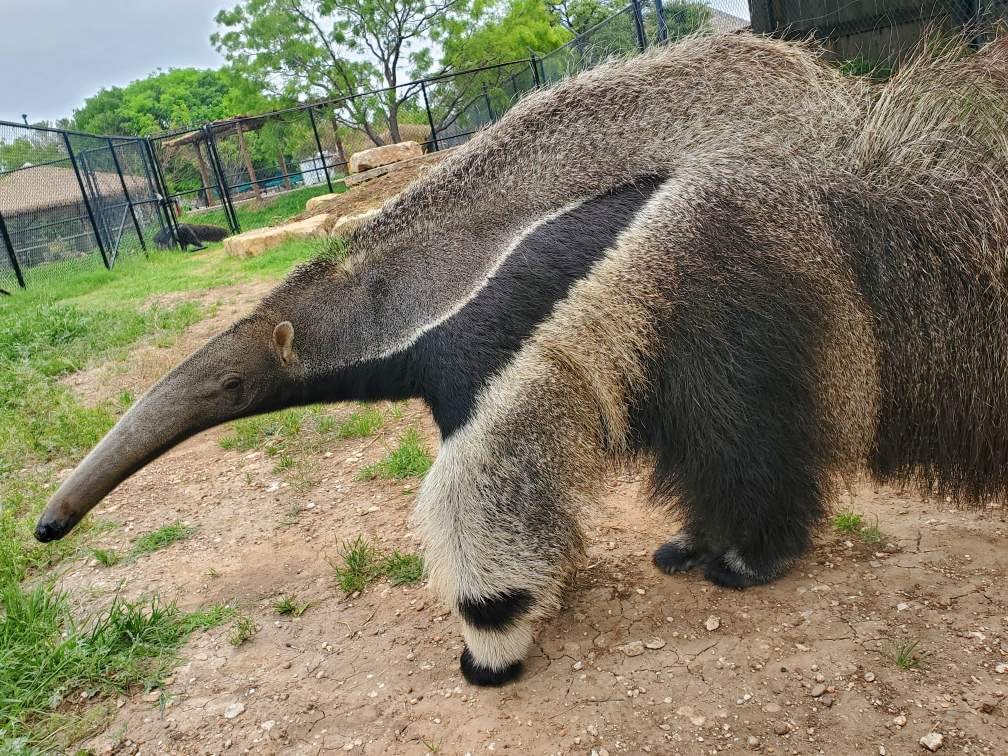The giant anteater (Myrmecophaga tridactyla) is an iconic mammal that stands out for its specialized feeding habits and atypical appearance. Solitary in nature and agile on paws, this mammal is an indispensable species in our ecosystems.
We have remarkable giant anteaters with us at Abilene Zoo, and are thrilled to share with you their delightful characteristics as well as plight.
Diet
As its name suggests, giant anteaters are insectivorous feeders whose diet is mainly made up of ants and termites. They are superabundant in the wild and have the nutrients necessary for the giant anteater’s survival. On average, a giant anteater can consume up to 30,000 ants and termites in a single day. This helps regulate their populations, reducing their overgrazing and potential detriment to vegetation.
As edentate animals, these toothless giants rely solely on their powerful claws to tear open ant and termite mounds. Once they have breached a hill, they use their long tongues to lap up the insects, slurping them up in quick succession to avoid stings. This mode of feeding also helps aerate soil, improving its health.
Habitat
Giant anteaters are native to Central and South America, where they occupy a variety of environments, including grasslands, deciduous forests, and rainforests. They prefer open areas and forest edges, where they can find abundant insect populations and sufficient water.
Size and Weight
Giant anteaters are quite imposing; adults can reach up to 8 feet from the tip of their elongated snout to their long, bushy tails. This length, coupled with their impressive weight which ranges between 60 to 140 pounds makes them the largest of the anteater species. Males are generally larger and heavier than females.
Giant Anteater Skull and Skeleton
The skull of the giant anteater is tubular, accommodating its long tongue and distributing the weight of its head. The skeleton is robust, with strong limbs adapted for digging and tearing open insect mounds.
Migration
Although they do not have permanent nesting sites, giant anteaters don’t migrate over long-distances; they are only known to wander within their home ranges in response to food availability and environmental conditions. During the dry season or in cases of habitat obstruction, they may travel further to find new resting areas, sufficient food, and water sources.
Conservation Status
The giant anteater is currently listed as Vulnerable. The International Union for Conservation of Nature (IUCN) notes it as one of the most threatened mammalian species in Central America, suffering loss of grassland habitats to encroachment, road traffic and fierce hunting from both man and predators. Their low reproductive rates aggravate their vulnerability.
Visit the Abilene Zoo today and enjoy an exclusive experience with our giant anteaters.
Fast Facts
A giant anteater's tongue is 2 feet long and can flick in and out of its mouth 150 times per minute.
Giant anteaters can eat as many as 30,000 ants or termites in a single day!
Anteaters have no teeth! They rely entirely on their sticky tongues to collect ants and bugs that they swallow whole.
The front claws of a Giant Anteater can grow up to 4 inches. When threatened, the Giant Anteater will stand up on its hind legs and swipe at the threat with its long front claws!

FAQ
Are giant anteaters dangerous?
While giant anteaters are not aggressive and not a threat to humans, they will not hesitate to defend themselves when threatened. When in danger, giant anteaters will stand up on their hind legs and swipe at the threat with their long front claws.
How long do giant anteaters live?
Giant anteaters can live for up to 15 years in the wild. In captivity, they can live twice the time.
How long is a giant anteater's tongue?
A giant anteater’s tongue is 2 feet long and can flick in and out of its mouth 150 times per minute.


